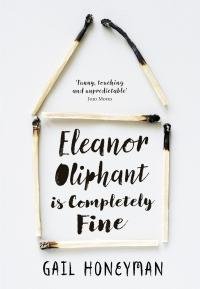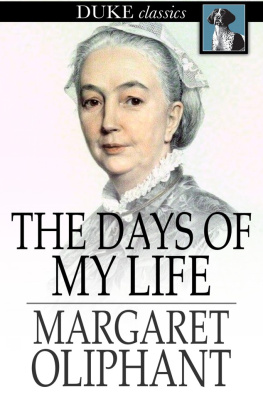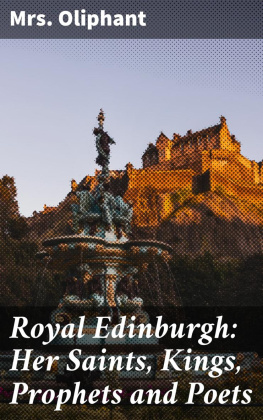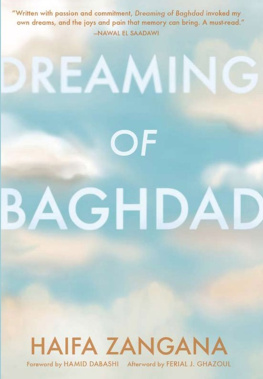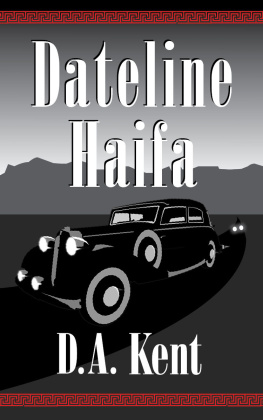HAIFA
OR
LIFE IN MODERN PALESTINE
BY
LAURENCE OLIPHANT
AUTHOR OF THE LAND OF GILEAD, ALTIORA PETO,
PICCADILLY, ETC.
SECOND EDITION
WILLIAM BLACKWOOD AND SONS
EDINBURGH AND LONDON
MDCCCLXXXVII
PREFACE.
The expectations which have been excited in the minds of men by the prophecies contained in Scripture, and the hopes which have been roused by them, have ever invested Palestine with an exceptional interest to Biblical students; while its sacred conditions, historical associations, and existing remains prove an attraction to crowds of pilgrims and tourists, who annually flock to the Holy Land. As, however, the impressions of a resident and those of a visitor are apt to differ widely in regard to the conditions which actually exist there, and the former has opportunities of researches denied to the latter, I have ventured to think that a series of letters originally addressed to the New York Sun, and extending over a period of three years passed in the country, might not be without interest to the general reader. Many of these will be found to deal chiefly with archological subjects, which must, indeed, form the main subject of attraction to any one living in the country, and conversant with its history.
A flood of light has been thrown of recent years upon its topography, its ancient sites, and the extensive ruins which still exist to testify to its once teeming population, by the prolonged and valuable researches of the Palestine Exploration Fund of London.
As, however, these are embodied in volumes so expensive that they are beyond the reach of the general public, and are too technical in their character to suit the taste of the ordinary reader, I have in many instances endeavoured to popularise them, availing myself extensively of the information contained in them and in Captain Conder's excellent Tent Work in Palestine, and quoting freely such passages as tended to the elucidation of the subject under consideration, more especially with regard to recent discovery at Jerusalem; but which, as I was grubbing about, I have not been able to define as exactly as I should have liked to do had all the publications been beside me at the moment.
The experience and investigation of the last three years, however, have only served to convince me that the field of research is far from being exhausted, and that, should the day ever come when excavation on a large scale is possible, the Holy Land will yield treasures of infinite interest and value, alike to the archologist and the historian.
Haifa , 1886.
CONTENTS.
| PAGE |
| Circassian Highwaymen.A Druse Festival at Elijah's Altar |
The chapters which compose this volume originally formed a series of letters, all of which passed through my hands. I prepared them for their first appearance in print, and corrected the proofs afterwards. Finally, it was at my suggestion and advice that they were gathered together in a book.
The deep interest which the land of Palestine possesses for every thoughtful mind makes us all greedy for fresh and truthful information, alike concerning its present condition and the discoveries which new researches add to our knowledge of the past. From this point of view, many of the pages which follow are of exceeding importance. Every Christian will read with deep attention the author's description of the present state of places connected with momentous events of New-Testament history; and when, as in the present instance, the traveller and investigator is one whose judgment and whose accuracy may be entirely relied upon, the value of the report surpasses every careless estimate.
It is with this feeling that I have urged my friend to complete his work for publication, and with this feeling I earnestly commend it to the reader. Nor is its interest confined to historical and Biblical questions alone; the ethnologist examining the races of modern Syria, and the philosopher contemplating the marvellous processes of Asiatic transformation, will also find here material which will repay their most careful study.
C. A. Dana.
New York , November, 1886.
HAIFA.
Smyrna , Nov. 4, 1882.There are two ways of doing Ephesus: you may either go there and, like the Apostle, fight with beasts, in the shape of donkeys and donkey boys, or you may wear yourself to death under the blazing sun, alternately scrambling over its rocks, and sinking ankle deep in the mire of its marshes. In old days it was an easy two days' ride from Smyrna to Ephesus, the distance being about fifty miles, but the Smyrna and Aiden Railway speeds you to the ruins in about two hours now, first through the romantic little gorge from whose rocky ledge rises the hill crowned by the ruined castle which overlooks the town, past a modern and an ancient aqueduct, the latter moss-grown and picturesque, with its double sets of arches rising one above the other; through orange and pomegranate groves, and vineyards yellow and languishing at this season of the year from the drought; across fertile plains from which the cereals and corn crops have been removed, and where flocks of sheep and goats are scattered on distant hill slopes, or follow in long lines the striking figures of the shepherds in their broad-shouldered felt coats; past the black tents of the Yourouks, a nomadic tribe of Turcomans, whose kindred extend from here to the great wall of China, and who vary their pastoral operations from one end of Asia to the other with predatory raids upon unsuspecting travellers; and so on into a wilder country, where the mountains close in upon us, and the Western tourist begins to realize that he is really in Asia, as groups of grunting camels, collected at the little railway stations, and their wild-looking owners, tell of journeys into the far interior, and excite a longing in his Cockney breast to emancipate himself from the guidance of Cook, and plunge into the remote recesses of Asia Minor or Kurdistan.
As we approach Ephesus the country again becomes more fertile, and groves of fig-trees, surpassing all preconceived notions of the size ordinarily attained by these trees, reveal one of the principal sources of supply of those fine fresh figs which find their way in such abundance to American railway cars. As the modern Ephesus is a miserable little village, containing only a few huts and a very limited supply of donkeys, the wary traveller will see that his are sent on from Smyrna beforehand, and will probably find some consolation for the absence of any competent guide or decent accommodation, or appliances for seeing the ruins, in the evidence which this fact affords of the comparative rareness of tourist visitors.
So far from being assailed by shouts for backsheesh, or bombarded by sellers of sham antiques, or struggled for by rival guides, one is left entirely to one's own devices on that desolate little platform. There is an apology for a hotel, it is true, where cold potted meats are to be obtained, and, by dint of much searching, a guide, himself an antique, turns up, but we are very sceptical of his competency. A row of columns still standing, which once supported an aqueduct, and the crumbling ruins of a castle on a conical little hill immediately behind the railway station, suggest the mistaken idea that these are the ruins of Ephesus. They are very decent ruins, as ruins go, but the castle is a comparatively modern Seljk stronghold, and there is nothing certain about the antiquity of the aqueduct. In exploring the castle we find that the blocks of stone of old Ephesus have been built into its walls, and that a still more ancient gateway, dating from the early period of the Byzantine Empire, is also largely composed of these antique fragments, upon which inscriptions are to be deciphered, proving that they formed part of a Greek temple. So, in the old mosque of Sultan Selim, which is at the base of the hill, we find that the magnificent monolith columns of a still more ancient edifice have been used in the construction of what must in its day have been a fine specimen of Saracenic architecture; but we have not yet reached the site of ancient Ephesus. As we stand on the steps of the old mosque we look over a level and marshy plain, about a mile broad, which extends to the foot of two rocky hills, each about two hundred feet high, and divided from each other by what appears to be a chasm. Behind these is a higher ridge, backed by the mountain chain. It is on these two rocky eminences, and on their farther slopes, now hidden from view, that the ancient Ephesus stood; but the problem which has for many years vexed antiquarians is the site, until recently undiscovered, of what gave the town its chief notoriety.



